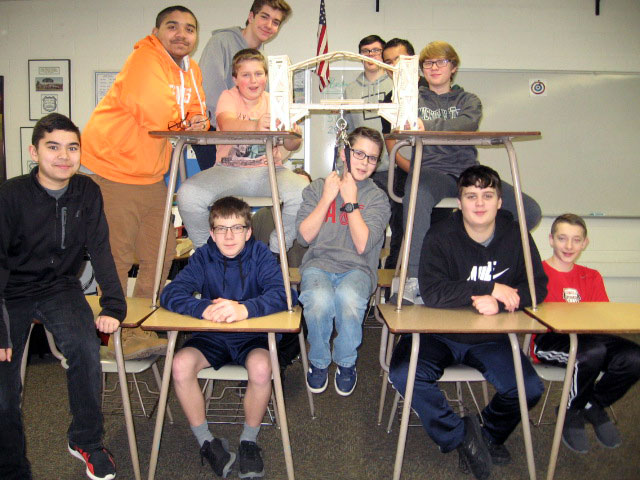Kenny Kenyon set the stick and wire model of San Francisco’s Golden Gate Bridge he had spent a couple weeks constructing on a platform. He stepped back as Lowell Middle School teacher Joe Keglovitz attached a chain that held 190 pounds of weight plates.

“Feel the tension?” Keglovitz asked the eighth grader as he slowly turned a crank that transferred more and more of the weight from a metal lift to Kenny’s model.
“It’s gone,” sighed Kenny about a second before an audible snap that sent wood flying.
“That’s why we practice our duck and cover drills,” joked-but-not-joked Keglovitz.
For the second year, eighth graders in Keglovitz’s two STEM classes took on the challenge of building bridges and testing the strength of their creations.
It’s a project designed to fail, he explained.

“It’s not about the building of the bridges as much as it’s about researching and testing and trying again. By doing this, one of the best skills they take away is learning from failure.”

Prior to construction, students were randomly assigned to construct scale models of one of 14 bridges around the world. Various designs were used including truss, cantilever and suspension.
After researching their bridge and noting heights, lengths and angles, the budding engineers used 3D modeling software to scale the longest span for construction. Students then transferred the span from the computer to a rough draft blueprint.
Each builder was provided the same basic materials to emphasize the importance of the construction process and attention to detail.












